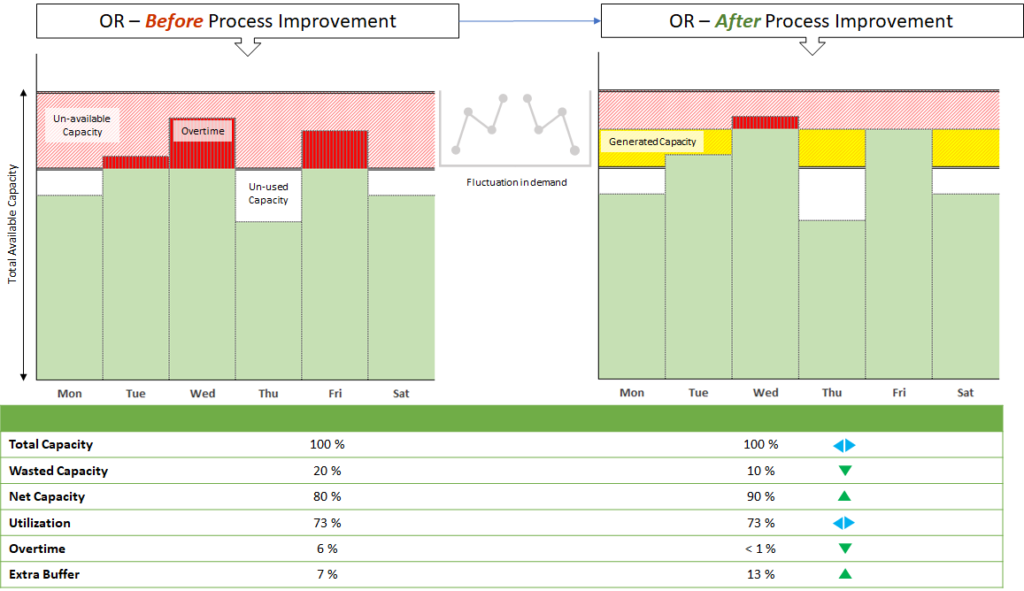Operating rooms (OR) are the heartbeat of any hospital, playing a pivotal role in patient care and the generation of hospital revenue. Therefore, any inefficiencies in this sector can have significant consequences both from a patient and hospital perspective. Given the gravity of this issue, the process of improving OR performance or Optimizing Operating Rooms is of paramount importance.
The Dual Importance of OR Performance
Patient Perspective
From a patient’s lens, the effective management of ORs is integral to their overall healthcare journey. Smooth and efficient OR operations translate into reduced waiting times, less anxiety, and an overall improved patient experience. When patients enter the OR, they are often already under stress and in need of medical attention. Delays or disruptions in the OR can exacerbate their anxiety and negatively impact their overall experience.
Hospital Perspective
For hospitals, the efficient utilization of ORs directly impacts their bottom line. Every hour of OR downtime represents lost revenue. Hence, hospital administrators recognize the potential benefits of Optimizing Operating Rooms through process improvement.
The Question of Process Improvement
Despite the apparent benefits of process improvement, a critical question often arises: is it worth investing in process improvement if the newly generated capacity is not fully utilized? To address this question, let’s delve into an illustrative case study.
Case Study: Private Hospital OR Improvement Initiative
Imagine a private hospital with 8 Operating Rooms available from 9 AM to 5 PM, six days a week. The OR director identified that the rooms were not being utilized effectively, prompting a process improvement plan.
Process Improvement Outcomes
Despite the implementation of process improvements, the utilization rate remained the same. However, the additional capacity generated through process improvement significantly reduced the cost of overtime, creating a buffer for unexpected changes in demand, such as emergency cases. Let’s compare the before and after scenarios to illustrate the point:

- Before Process Improvement
- OR utilization: 73%
- Overtime : 6 %
- Buffer : 7 %
- After Process Improvement
- OR utilization: 73%
- Overtime : <1 %
- Buffer : 13 %
In this example, even though the OR utilization rate remained constant at 73%, the hospital managed to reduce its overtime costs and increase the buffer. This means that the additional capacity created through process improvement was not immediately utilized for more cases but was used to handle unexpected situations more efficiently.
Unutilized Capacity: A Hidden Advantage
While it might seem counterintuitive, the unutilized capacity created through process improvement is not necessarily a negative outcome. Instead, it provides a level of flexibility that can be beneficial in managing fluctuating demand and accommodating additional cases. Hospitals are dynamic environments, and the ability to adapt to changing circumstances is a crucial asset.
Final Thoughts
In essence, it’s crucial to understand that the immediate utilization of additional capacity generated through process improvement isn’t always necessary. Instead, it can be harnessed to effectively manage demand fluctuations and increase the number of cases handled. Thus, process improvement in the OR – even if it initially results in unutilized capacity – can help hospitals manage their resources more efficiently and improve their service delivery.
Process improvement isn’t about perfection. It’s about ‘getting better everyday’ That’s what this case study shows. Even if all the extra capacity isn’t used right away, the hospital is now in a much better position to handle changes and needs as they come up.
Key Takeaways
- Operating rooms are critical to patient care and hospital revenue.
- Process improvement in ORs can lead to significant benefits, even if not all generated capacity is utilized immediately.
- Unutilized capacity can provide flexibility to manage fluctuating demand and accommodate additional cases.
- Immediate utilization of additional capacity isn’t always necessary or beneficial.
Operating Room Efficiency: Top 5 Key Performance Indicators (KPIs) Every Hospital Should Track